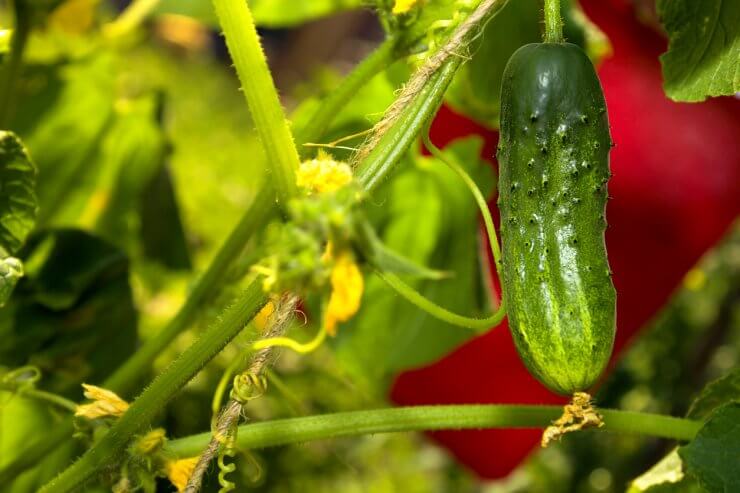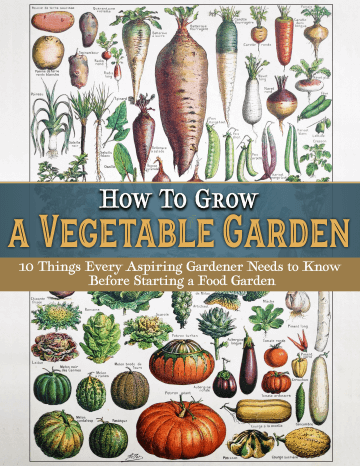
As an avid food gardener, I can honestly say that the Bush Pickle cucumber is one of my all-time favorite plants to grow. This unassuming, squat little vine produces pint-sized powerhouses of flavor, charm, and attitude. If vegetables could talk, the bush pickle would probably say, “I may be short, but I’m dill-lightful!”
Let’s take a humorous, good-natured, and lighthearted journey through the wild and whimsical world of the Bush Pickle cucumber—its quirky origin story, its rise to crunchy stardom, and why I keep coming back to this plant year after year despite a few vine-sized inconveniences.
Discover 10 top tips for growing, harvesting, and enjoying fruits, vegetables, herbs and more from your home garden—when you access the FREEBIE How to Grow a Vegetable Garden, right now!
The Curious Origin of the Bush Pickle Cucumber
The Bush Pickle cucumber was developed as a compact, early-producing cucumber variety specifically designed for small gardens, container growing, and—let’s be honest—impatient gardeners like me who want their cukes yesterday. Bred for vigor and productivity in tight spaces, the Bush Pickle burst onto the scene in the late 20th century like the culinary version of a pocket-sized superhero.
And it’s got a fan club. From apartment balconies in Brooklyn to raised beds in Boise, gardeners across America have embraced this variety for its small footprint and fast-paced production schedule. If cucumbers were cars, this one would be a zippy little electric hatchback: efficient, eco-friendly, and surprisingly peppy.
Fun Facts About the Bush Pickle Cucumber
- It’s a Bush, Not a Vine: Unlike traditional cucumbers that sprawl like they’re practicing yoga, the Bush Pickle has a compact, bushy habit perfect for space-challenged gardeners or those with an aversion to tangled vines.
- Early to the Party: This variety matures in as little as 45-52 days, making it one of the earliest cucumber harvests in the garden.
- Snack-Sized & Perfectly Proportioned: The cucumbers are usually 4-6 inches long, ideal for pickling, snacking, or tossing whole into lunchboxes like a green torpedo of joy.
- Prolific Producers: Once they get going, Bush Pickles pump out cucumbers faster than a teenager can empty your fridge.
The Pros and Cons of Growing Bush Pickle Cucumbers
Pros:
- Compact size makes them perfect for containers, raised beds, and tight garden corners.
- Fast-growing and early-producing, so you won’t be cucumber-less in July.
- Great for pickling—they’re the classic “crunch” in your homemade dills.
- Kid-friendly gardening option. No thorny vines or unruly tendrils.
Cons:
- Short harvest window—you’ll get a great flush of cucumbers, but then production slows unless succession planting is in place.
- Watch for bitterness—if you forget to water during a hot spell, they may develop a bit of a bite. (Unless you like your cukes with a sassy personality.)
- Powdery mildew magnet if not properly spaced for airflow—especially in humid climates.
A Garden Plan for Bush Pickle Cucumber Success
Selecting Seeds
Look for non-GMO, disease-resistant Bush Pickle cucumber seeds from a reputable source. Some varieties go by similar names like “Bush Pickle Hybrid,” so check for maturity dates and container suitability.
Planting
- Timing: Plant once the soil is consistently above 70°F (usually late spring).
- Spacing: 18-24 inches apart if planting in rows or raised beds. For containers, one plant per 5-gallon pot works wonders.
- Soil: Rich, well-draining, and slightly acidic to neutral (pH 6.0–7.0).
- Sunlight: Full sun, at least 6-8 hours per day.
Growing
- Water regularly: Keep the soil evenly moist, not soggy. A thirsty cucumber is a bitter cucumber.
- Mulch: Helps retain moisture and prevent weeds. Plus, mulch is the gardening equivalent of a weighted blanket.
- Fertilizer: Start with a balanced fertilizer at planting time and switch to a low-nitrogen, higher-potassium blend once flowering begins.
- Pests: Keep an eye out for cucumber beetles and aphids. Neem oil is a safe and effective option.
Harvesting
- Harvest when cucumbers are 4-6 inches long and firm. Waiting too long = seeds and sogginess.
- Pick daily during peak production to encourage more fruiting.
Culinary Magic: What to Do With All Those Bush Pickle Cucumbers
Bush Pickles are born to be pickled, but don’t stop there!
Top Recipe Ideas:
- Quick Refrigerator Pickles – Sweet, spicy, or sour? Choose your adventure!
- Cucumber Tea Sandwiches – Thinly sliced with a dab of cream cheese and dill.
- Garden Fresh Tzatziki Sauce – Shredded cucumber, garlic, lemon juice, and Greek yogurt.
- Crunchy Cucumber Salad – Rice vinegar, sesame oil, and chili flakes make for an addictive side dish.
- Cucumber Lemonade – Blended and strained cucumber mixed into lemonade = summer bliss.
And yes, I’ve been known to eat them straight off the plant with a sprinkling of sea salt and the satisfied grin of a gardener who knows they’ve grown something extraordinary.
Final Thoughts and an Invitation…
If you’re thinking about growing Bush Pickle cucumbers this season—or if you’ve tried and loved them already—know that you’re in excellent company. These little green gems are a gift to any garden, from sprawling suburban yards to humble balcony pots.
For more information about growing, harvesting, and eating Bush Pickle cucumbers, check out our comprehensive Cucumber Growing Guide. You’ll find tips, recipes, and everything you need to make this season your crunchiest, most delicious one yet.
Discover 10 top tips for growing, harvesting, and enjoying fruits, vegetables, herbs and more from your home garden—when you access the FREEBIE How to Grow a Vegetable Garden, right now!




